Top Technological Trends To Watch Out In 2024
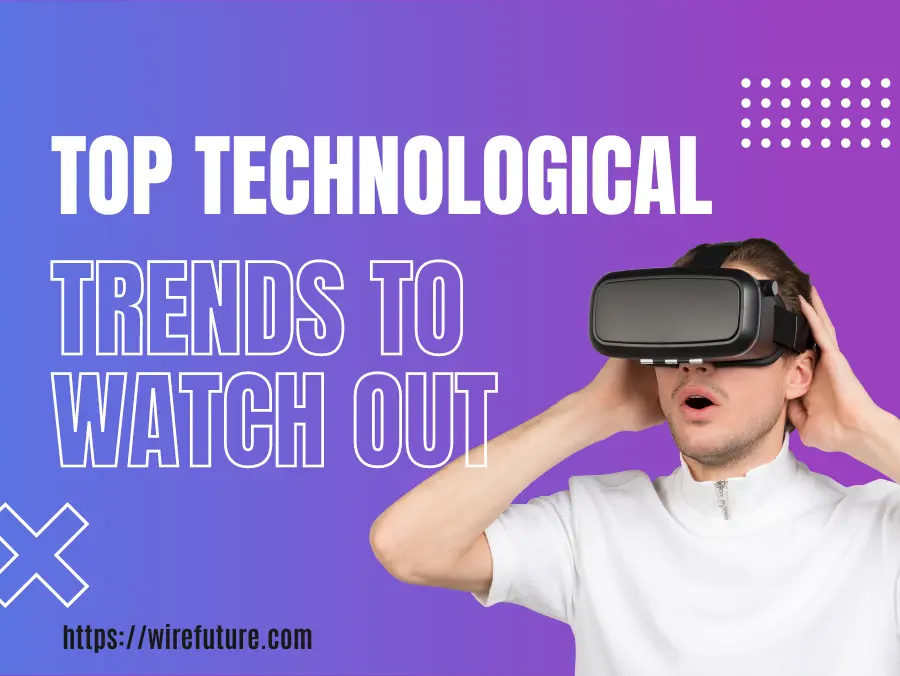
Today we’ll explore the Top Technological Trends that everybody should be aware of in 2024! In an era of fast technological development and digital transformation, staying on top of the most recent trends is crucial for companies, enthusiasts and professionals. The world of technology is always changing, as new technologies develop that push the envelope of what’s feasible and redefine just how we live, interact and work with the environment. From AI and ML to Blockchain, Cryptocurrency and much more, each trend has got the potential to transform industries, drive economic growth, and solve a number of the largest challenges facing our planet.
This blog explores the current top technological trends, in detail, to understand their impact, applications and the future they promise. As we discuss the emergence of Artificial Intelligence reshaping industries, advancements in Machine Learning algorithms, the financial impact of Blockchain & Cryptocurrency, and much more, we discuss their influence and importance on our future.
Digital will be the new normal – the Internet of Things (IoT) connects infinite devices, Augmented Reality (AR) along with Virtual Reality (VR) offer immersive experiences, and 5G promises unequaled connectivity speeds – understanding these technological trends isn’t just advantageous, but essential. Furthermore, with cybersecurity becoming increasingly essential for protecting digital assets and green technologies emerging for environmental issues, technological innovation is diverse and diverse.
Join us as we explore the defining technological trends of 2024, their status, their origins, and the future they are pointing towards. With this exploration we wish to teach and hopefully inspire our readers to value the marvels of modern technology and the way it is able to bring about a cleaner, safer and greener world.
Table of Contents
- Technological Trends: The Surge of Artificial Intelligence (AI)
- Technological Trends: Machine Learning (ML) Breakthroughs
- Technological Trends: Blockchain and Cryptocurrency Expansion
- Technological Trends: The Internet of Things (IoT) Connecting Everything
- Technological Trends: Augmented Reality (AR) and Virtual Reality (VR) Going Mainstream
- Technological Trends: 5G Technology Fueling Innovations
- Technological Trends: Cybersecurity in the Age of Digital Transformation
- Technological Trends: Quantum Computing Entering the Fray
- Technological Trends: Voice Assistants and Natural Language Processing (NLP)
- Wrapping Up on technological trends
Technological Trends: The Surge of Artificial Intelligence (AI)
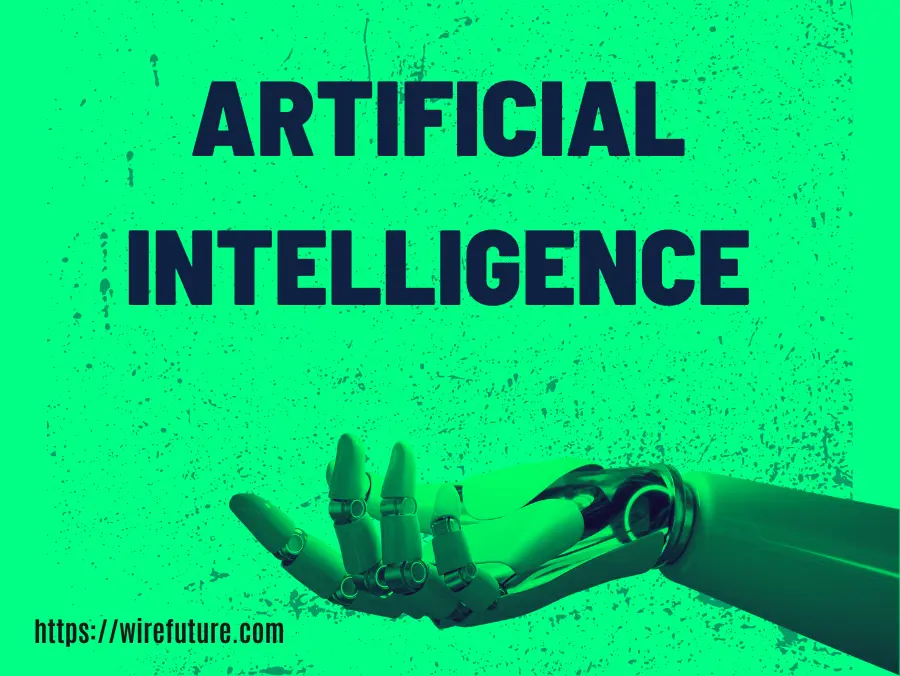
Artificial intelligence (AI) is the arrival of a brand new era in technological history, where machines can now perform tasks that previously required human Intelligence. This increase in AI power is a testament to human creativity along with a catalyst for transformation across an extensive spectrum of industries from healthcare to entertainment. AI adoption in these industries is driving efficiency and personalization of services while redefining the very paradigms of service delivery and customer experience.
Let’s outline some of the real-world applications of Artificial Intelligence (AI) that are not just future possibilities but are already in effect today, demonstrating the surge of AI across various sectors:
- Healthcare:
- AI-powered diagnostic tools: AI algorithms can analyze medical images like X-rays, MRIs, and CT scans more quickly and accurately than traditional methods, leading to faster and more accurate diagnoses.
- Personalized medicine: By analyzing patient data, AI can help tailor treatment plans to the individual’s genetic makeup, lifestyle, and other factors, improving treatment outcomes.
- Robot-assisted surgery: AI enhances the precision of surgical procedures, reducing recovery time and increasing the success rate of surgeries.
- Finance:
- Fraud detection and prevention: AI systems can monitor and analyze transaction patterns in real-time to identify and prevent fraudulent activities much more efficiently than conventional systems.
- Algorithmic trading: AI algorithms can analyze market data at high speeds to make automated trading decisions based on market conditions, often outperforming human traders.
- Entertainment:
- Content recommendation engines: Platforms like Netflix and Spotify use AI to analyze your viewing or listening history to recommend movies, TV shows, or music tailored to your preferences.
- Game development: AI is used to create more realistic and challenging non-player characters (NPCs) and to dynamically adjust game difficulty levels to the player’s ability.
- Automotive:
- Autonomous vehicles: AI is the backbone of self-driving car technology, processing data from vehicle sensors and cameras to navigate safely and make decisions in real-time.
- Predictive maintenance: AI algorithms can predict when parts of a vehicle are likely to fail or require maintenance, preventing breakdowns and enhancing safety.
- Retail:
- Customer service chatbots: AI-powered chatbot development can handle customer inquiries 24/7, providing immediate responses and improving customer service.
- Inventory management: AI systems can predict inventory needs, optimize stock levels, and reduce waste by analyzing sales data and trends.
- Smart Home Technology:
- Energy management: AI can optimize heating, cooling, and lighting systems in homes to improve energy efficiency and reduce costs.
- Security and surveillance: AI-enabled cameras and systems can recognize faces, detect unusual activity, and alert homeowners to potential security breaches.
- Agriculture:
- Crop monitoring and analysis: AI-driven drones and satellites can monitor crop health, moisture levels, and pest threats, providing data to optimize crop yields and reduce the use of pesticides.
- Manufacturing:
- Quality control: AI systems can inspect and analyze products at high speeds with great accuracy, identifying defects that would be invisible or hard to detect by human inspectors.
- Supply chain optimization: AI can predict supply chain disruptions and automatically adjust production schedules and inventory levels to maintain efficiency.
Technological Trends: Machine Learning (ML) Breakthroughs
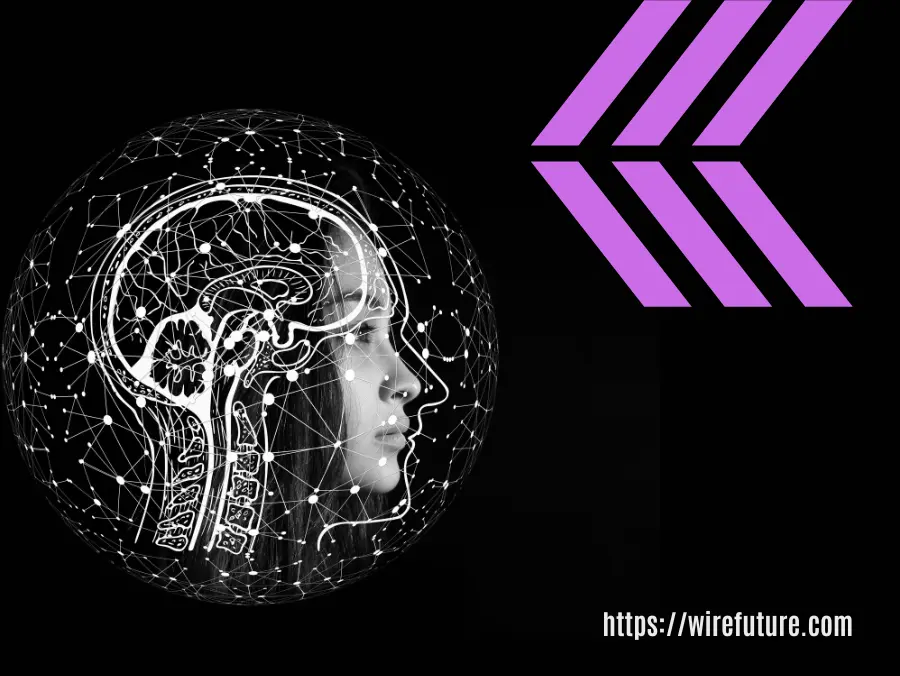
A crucial element of AI, Machine Learning (ML) has made substantial inroads in recent years with disruptive effects in a number of industries. These advancements aren’t merely technical enhancements; They’re changing the very paradigms of decision making, product development and service delivery to end-users. The core of this revolution is the development of ML algorithms which have evolved exponentially in speed, accuracy and efficiency. The ability to learn from smaller sized datasets is now possible in modern algorithms, which reduces the barrier of entry for implementing ML solutions in different domains.
The refinement of these algorithms is the result of years of study and innovation to produce models which not only process information more efficiently but also with unprecedented cognitive fidelity. This evolution enables machines to do tasks previously thought not possible to human intelligence – to understand patterns and make empirically based choices.
Let’s highlight some of the real-world applications of Machine Learning (ML) that showcase the breakthroughs and advancements in ML algorithms and a witness to one of the topmost technological trends. These examples illustrate how ML is currently being utilized across various sectors, making operations more efficient and enhancing user experiences:
- Business Analytics and Predictive Modeling:
- Customer behavior prediction: ML models analyze customer data to predict future buying behaviors, helping businesses tailor marketing strategies and product offerings.
- Demand forecasting: Companies use ML to predict future product demand, optimizing inventory management and reducing waste.
- Healthcare:
- Predictive health monitoring: Wearable devices use ML algorithms to monitor health indicators, predicting potential health issues before they become serious.
- Drug discovery and development: ML algorithms can analyze vast datasets to identify potential drug candidates much faster than traditional research methods.
- Finance:
- Credit scoring: ML models improve the accuracy of credit risk assessments, enabling lenders to make more informed decisions.
- Personalized banking services: ML algorithms analyze customer transaction data to offer personalized banking advice and product recommendations.
- E-Commerce and Retail:
- Personalized shopping experiences: ML algorithms power recommendation systems that provide personalized product suggestions based on browsing and purchase history.
- Price optimization: Retailers use ML to dynamically adjust prices based on demand, competition, and inventory levels.
- Cybersecurity:
- Anomaly detection: ML models can identify patterns indicative of cyber threats or fraud by analyzing network traffic, making systems more secure.
- Automated threat intelligence: ML algorithms can sift through vast amounts of data to identify new threats and vulnerabilities, staying ahead of cybercriminals.
- Transportation and Logistics:
- Route optimization: ML algorithms can analyze traffic data in real-time to optimize delivery routes, reducing fuel consumption and delivery times.
- Predictive maintenance: Predictive models analyze data from vehicle sensors to anticipate maintenance needs, reducing downtime and operational costs.
- Manufacturing:
- Process optimization: ML algorithms can optimize production processes for efficiency, quality, and waste reduction by analyzing operational data.
- Predictive maintenance of machinery: Similar to their application in transportation, ML models predict when machines are likely to fail or need maintenance, improving productivity and reducing downtime.
- Entertainment and Media:
- Content optimization: ML algorithms analyze user engagement and preferences to optimize content creation and distribution strategies.
- Automated content categorization: ML helps in classifying and tagging content, making it easier for users to find relevant information or entertainment.
- Education:
- Personalized learning: ML algorithms can tailor educational content to match the learning pace and style of individual students, improving learning outcomes.
- Automated grading: ML can assist in grading assignments and exams, reducing the workload on educators and providing timely feedback to students.
Technological Trends: Blockchain and Cryptocurrency Expansion
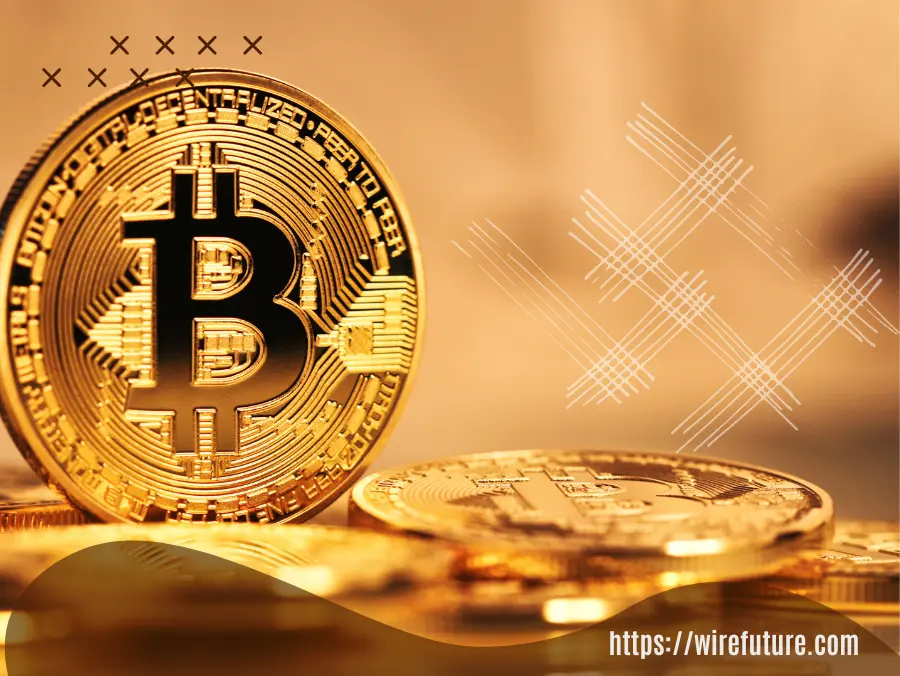
The adoption of blockchain and cryptocurrency technologies is a worldwide digital and financial paradigm shift. Far outside of the initial appeal of Bitcoin, the cryptocurrency space has expanded to include dozens of altcoins and tokens with varying uses. Concurrently, blockchain technology has transcended its financial origins, finding applicability in different sectors because of its inherent security and transparency.
Below are some real-world applications that highlight the breadth and potential of blockchain and cryptocurrency:
- Finance and Banking:
- Cross-border payments: Cryptocurrencies like Ripple (XRP) offer a faster, cheaper alternative for international money transfers, bypassing traditional banking systems and their associated fees.
- Decentralized finance (DeFi): Platforms enable peer-to-peer financial services on public blockchains, allowing for lending, borrowing, and earning interest on cryptocurrency without traditional banks.
- Supply Chain Management:
- Provenance tracking: Blockchain technology is used to create immutable records of product journeys, from production to delivery, ensuring authenticity and reducing counterfeits.
- Smart contracts for automated payments: Contracts that automatically execute transactions when predetermined conditions are met, enhancing efficiency and reducing disputes.
- Healthcare:
- Patient data management: Secure and interoperable patient records on a blockchain, ensuring privacy and ease of access for authorized healthcare providers.
- Counterfeit medication prevention: Tracking drug production and distribution on a blockchain to ensure authenticity and safety.
- Real Estate:
- Tokenization of property: Dividing real estate into digital shares on a blockchain, making it easier for individuals to invest in property and diversify their portfolios.
- Streamlining property transactions: Using smart contracts to automate and secure the process of buying, selling, or renting property, reducing paperwork and speeding up transactions.
- Voting Systems:
- Secure voting mechanisms: Blockchain can offer a secure, transparent, and tamper-proof system for electronic voting, potentially increasing voter turnout and trust in election processes.
- Digital Identity:
- Decentralized identities: Blockchain technology can provide a secure and immutable digital identity for individuals, reducing fraud and simplifying identity verification processes.
- Energy Sector:
- Peer-to-peer energy trading: Blockchain enables households with renewable energy sources, like solar panels, to sell excess energy directly to neighbors without going through the traditional grid, optimizing energy distribution.
- Art and Collectibles:
- Non-fungible tokens (NFTs): Unique digital assets verified on a blockchain, representing ownership of specific items like digital art, music, or even tweets, creating new markets and opportunities for artists and collectors.
- Education and Credentials:
- Verification of academic credentials: Securely storing and sharing academic achievements and certificates on a blockchain, making it easier for employers to verify qualifications.
- Gaming Industry:
- In-game assets and economies: Using cryptocurrency and blockchain to buy, sell, or trade in-game items in a secure and transparent way, often through the use of NFTs.
Technological Trends: The Internet of Things (IoT) Connecting Everything
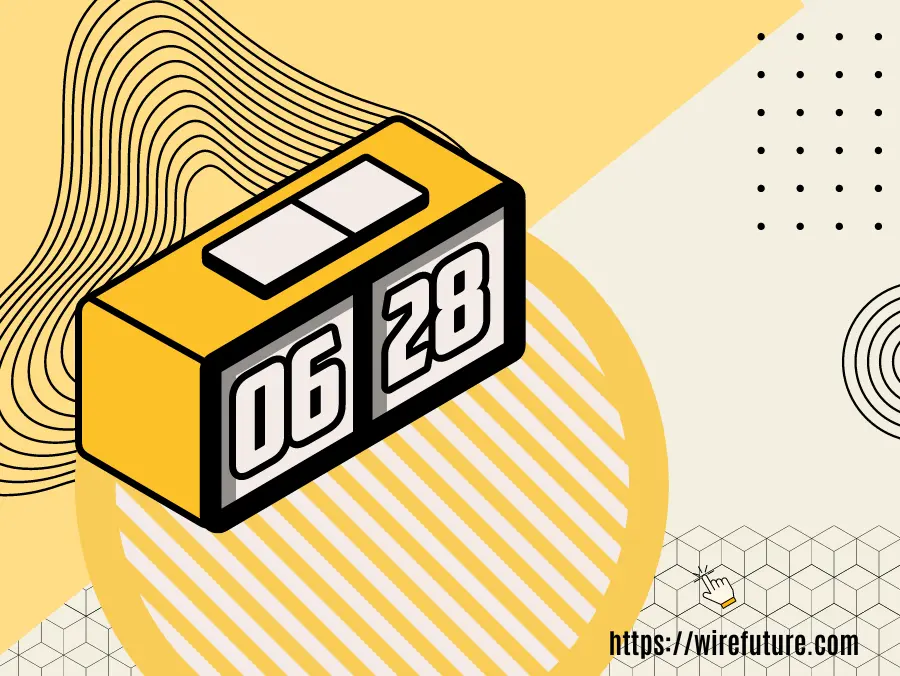
The Internet of Things (IoT) is altering how we experience the actual physical world by way of an expanding system of connected devices. This technology isn’t only smartening our homes and offices but also reshaping whole cities enabling convenience, sustainability, and efficiency.
Below are some real-world applications of IoT, highlighting its pervasive impact across various sectors:
- Smart Homes:
- Energy management systems: IoT devices like smart thermostats and lighting systems learn from your habits to optimize energy use, reducing costs and environmental impact.
- Security and surveillance: Smart locks, cameras, and alarm systems provide enhanced security, allowing remote monitoring and control via smartphones.
- Smart Cities:
- Traffic management: IoT sensors and cameras monitor traffic flow and adjust signal timings in real-time to reduce congestion and improve urban mobility.
- Waste management: Smart waste bins monitor waste levels and optimize collection routes and schedules, improving efficiency and cleanliness.
- Healthcare:
- Remote patient monitoring: Wearable devices and home monitoring equipment allow healthcare providers to continuously monitor patients’ health remotely, enabling timely intervention when needed.
- Smart hospitals: IoT devices streamline hospital operations, from tracking assets and managing inventory to monitoring patient vitals and ensuring medication compliance.
- Agriculture:
- Precision farming: IoT sensors monitor soil moisture, crop health, and environmental conditions, enabling farmers to optimize water use and increase yields.
- Livestock monitoring: Wearable devices for livestock track health and location, facilitating better herd management and early disease detection.
- Manufacturing:
- Supply chain optimization: IoT sensors track materials and products through the supply chain, improving transparency, efficiency, and reducing delays.
- Predictive maintenance: Sensors on manufacturing equipment predict maintenance needs, reducing downtime and extending equipment life.
- Retail:
- Inventory management: IoT solutions provide real-time inventory tracking, reducing stockouts and overstock situations.
- Customer engagement: Smart shelves and interactive displays enhance the shopping experience by providing personalized recommendations and information.
- Energy Sector:
- Smart grids: IoT technology enables more efficient distribution of electricity by monitoring demand in real-time, integrating renewable energy sources, and automatically responding to power outages.
- Oil and gas monitoring: Sensors on pipelines and in wells monitor performance and alert operators to potential leaks or failures, improving safety and efficiency.
- Transportation and Logistics:
- Fleet management: IoT devices track vehicle locations, optimize routes, monitor fuel consumption, and manage maintenance schedules for efficiency and cost savings.
- Cargo tracking: Sensors monitor the condition of goods in transit, ensuring they are maintained at the correct temperature and humidity, and securing them against theft.
- Environmental Monitoring:
- Air quality monitoring: IoT sensors in urban areas provide real-time data on air pollution levels, helping to inform public health responses and environmental policies.
- Water quality monitoring: Sensors deployed in bodies of water monitor for contaminants and changes in ecosystem health, aiding in conservation efforts.
Technological Trends: Augmented Reality (AR) and Virtual Reality (VR) Going Mainstream
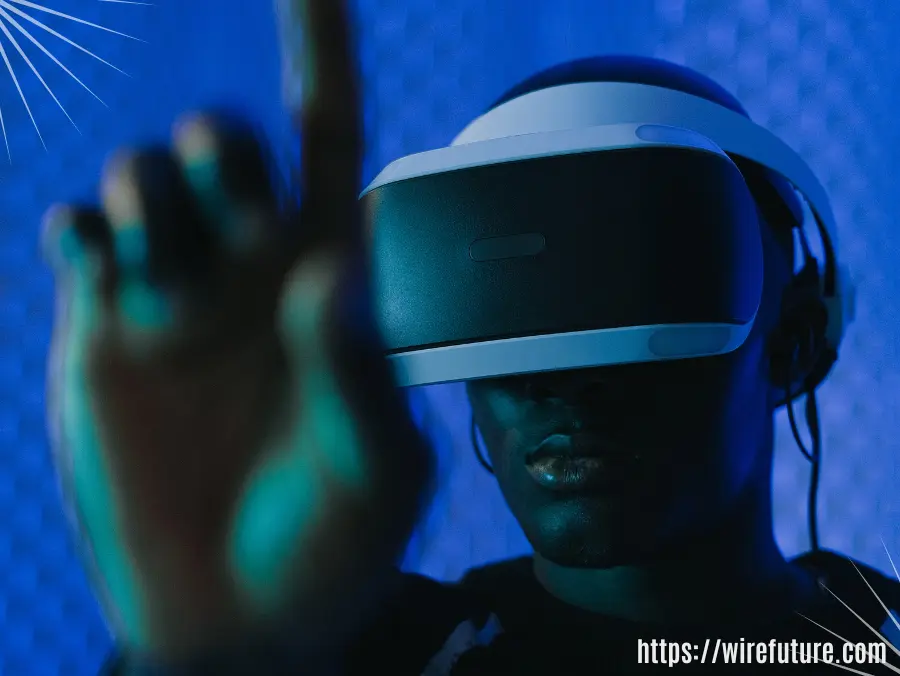
Augmented Reality (AR) along with Virtual Reality (VR) are advancing technologies which redefine entertainment, training, learning, retail and the work environment. AR and VR can transform our interactions across domains by superimposing digital content onto the real world or creating entirely virtual worlds.
Here are some real-world applications highlighting the versatility and impact of AR and VR:
- Entertainment:
- Gaming: VR provides immersive gaming experiences, placing players directly into the game world. AR games like Pokémon GO overlay game elements onto the real world, engaging players in novel ways.
- Virtual concerts and events: VR allows users to attend concerts, sports events, and performances from anywhere in the world, offering front-row experiences from the comfort of home.
- Education and Training:
- Virtual field trips: VR enables students to explore distant or inaccessible locations, from historical sites to extraterrestrial landscapes, enhancing educational engagement.
- Skill training and simulation: Both AR and VR are used for hands-on training simulations in fields such as medicine, aviation, and manufacturing, allowing learners to practice without real-world risks.
- Retail and Shopping:
- Virtual try-on: AR lets customers try on clothes, accessories, or even makeup virtually, using their smartphones or in-store kiosks, improving the shopping experience and reducing returns.
- Furniture and space planning: AR apps allow users to visualize how furniture or decor items will look in their own homes before making a purchase.
- Healthcare:
- Surgical training and planning: VR simulations help surgeons train for complex procedures, and AR overlays provide real-time data during surgeries, improving outcomes.
- Patient education and therapy: VR can be used for patient education, visualizing treatment plans, and therapeutic interventions for conditions such as PTSD or phobias.
- Real Estate:
- Virtual property tours: VR enables potential buyers to tour properties remotely, offering a comprehensive view of spaces without physical visits.
- Interior design visualization: AR apps help users and designers visualize changes in real-time, aiding in decision-making for renovations or interior decorating.
- Automotive Industry:
- Vehicle design and prototyping: VR allows designers to create and evaluate models in a fully immersive 3D environment, speeding up the development process.
- Showroom experiences: AR apps enable customers to customize and view different vehicle features and colors through their devices, enhancing the buying experience.
- Remote Work and Collaboration:
- Virtual workspaces: VR offers virtual offices and meeting rooms, allowing remote teams to collaborate more effectively in a shared virtual environment.
- Training and onboarding: AR and VR can simulate workplace scenarios for training new employees, familiarizing them with equipment, procedures, and safety protocols without being on-site.
- Tourism and Exploration:
- Virtual tourism: VR allows users to explore tourist destinations, museums, and natural wonders virtually, offering travel experiences without the need for physical travel.
- Cultural preservation: VR and AR can recreate historical sites or artifacts for educational purposes, preserving cultural heritage for future generations.
Technological Trends: 5G Technology Fueling Innovations
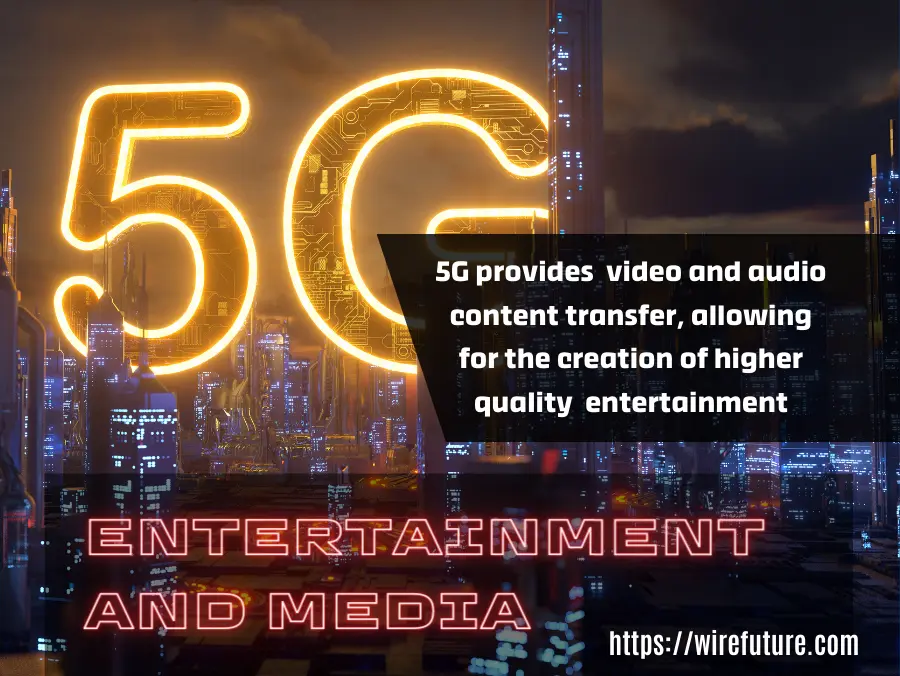
5G is poised to alter the digital landscape with considerably reduced latency internet connections. This step forward enhances existing applications and opens a broad range of new opportunities in various industries. With its capability to provide real-time data, 5G could transform many technologies – particularly those that need instant data processing and response.
Below, we explore some real-world applications and potential uses of 5G technology:
- Autonomous Vehicles:
- Enhanced vehicle communication: 5G enables vehicles to communicate with each other and infrastructure (V2X communication) in real-time, improving traffic flow and road safety.
- Remote control and management: 5G allows for the remote operation of vehicles, useful in logistics and potentially in emergency scenarios where human intervention is required.
- Healthcare:
- Telesurgery and remote medical procedures: With its low latency, 5G allows surgeons to perform surgeries remotely using robotic arms, making specialist medical care accessible in remote areas.
- Real-time remote monitoring: Patients can be monitored in real-time through wearable devices, enabling proactive management of chronic conditions and early intervention in emergencies.
- Smart Cities:
- Intelligent traffic systems: 5G can support systems that manage traffic flow in real-time, reducing congestion and enhancing pedestrian safety.
- Public safety and emergency services: Enhanced communication networks allow for more efficient response times and coordination during emergencies.
- Industrial Applications:
- Smart manufacturing: 5G networks facilitate the implementation of smart factories, where machinery and equipment are interconnected for real-time monitoring, analysis, and optimization of production processes.
- Logistics and supply chain management: Real-time tracking and management of goods become more efficient, reducing delays and improving transparency across the supply chain.
- Entertainment and Media:
- Immersive experiences: 5G supports high-definition streaming and augmented/virtual reality (AR/VR) content without lag, creating more immersive entertainment experiences.
- Live events: Enhanced connectivity allows for high-quality live streaming of concerts, sports events, and other live performances to global audiences without delay.
- Internet of Things (IoT):
- Large-scale IoT deployments: 5G’s capacity to support a massive number of connected devices simultaneously enables large-scale IoT applications, from smart agriculture to city-wide sensor networks.
- Real-time data analytics: The speed and reliability of 5G improve the collection and analysis of data from IoT devices, enhancing decision-making processes and operational efficiency.
- Education and Training:
- Virtual and augmented learning environments: 5G facilitates the creation of VR and AR educational content, offering students interactive and engaging learning experiences regardless of geographical location.
- Remote laboratories and simulations: Students can access laboratory equipment and simulations remotely in real-time, expanding educational opportunities in fields such as science and engineering.
- Retail:
- Augmented reality shopping: 5G enhances AR shopping experiences, allowing customers to try products virtually with minimal latency.
- Personalized and immersive retail: Retailers can leverage 5G to offer personalized shopping experiences and immersive in-store engagements through the use of digital technologies.
Technological Trends: Cybersecurity in the Age of Digital Transformation
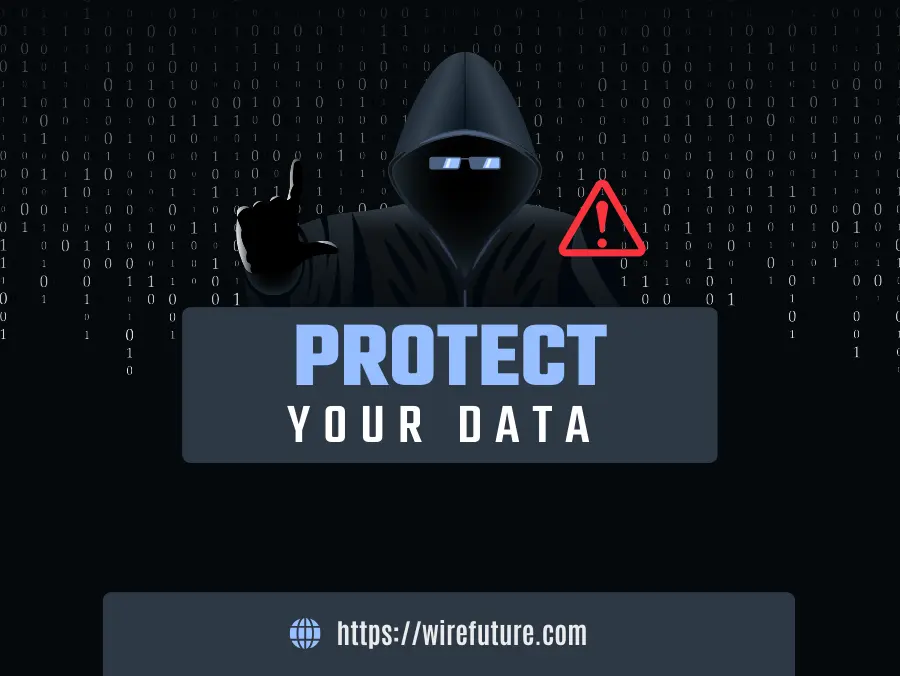
Cybersecurity is crucial in the digital transformation era. As electronic transactions, remote work, and online data storage expand exponentially, vulnerabilities are more prevalent than ever and effective cybersecurity is not a luxury but a necessity. The potential future of cybersecurity technologies aims to mitigate these risks with advanced encryption, AI enabled threat detection, and secure authentication.
Below are some real-world applications and potential uses of these advanced cybersecurity measures:
- Advanced Encryption Standards (AES):
- End-to-end encryption for communications: Utilized in messaging apps and email services to ensure that only the communicating users can read the messages.
- Secure online transactions: Encryption protocols protect data during online transactions, safeguarding sensitive information such as credit card numbers and personal details.
- AI and Machine Learning in Threat Detection:
- Real-time malware detection: AI algorithms can analyze patterns and behavior to identify and isolate malware before it infects the system.
- Anomaly detection in network traffic: Machine learning models monitor network traffic to detect unusual patterns that may indicate a cybersecurity threat, enabling proactive response.
- Secure User Authentication:
- Biometric authentication: Utilizing fingerprints, facial recognition, or iris scans for secure and convenient access to devices and services.
- Multi-factor authentication (MFA): An additional layer of security requiring users to provide two or more verification factors to gain access to a resource, reducing the likelihood of unauthorized access.
- Blockchain for Cybersecurity:
- Decentralized data storage: Using blockchain to distribute data across a network of computers, enhancing security by eliminating a single point of failure.
- Secure identity verification: Blockchain can provide a secure and unforgeable means of identity verification for online transactions and interactions.
- Zero Trust Security Models:
- Microsegmentation and least privilege: Implementing policies that limit access rights for users and devices to the bare minimum necessary to perform their functions, significantly reducing the potential impact of breaches.
- Continuous monitoring and validation: Ensuring that security measures are always in effect and that user and device trust levels are constantly reassessed.
- Security for Internet of Things (IoT) Devices:
- Device authentication and management: Securing the myriad of IoT devices against unauthorized access and ensuring that they can be centrally managed and updated.
- Encrypted data transmission: Protecting the data transmitted by IoT devices to prevent interception and misuse.
- Cloud Security:
- Cloud access security brokers (CASBs): Acting as intermediaries between users and cloud service providers to enforce security policies and ensure compliance.
- Secure cloud storage: Implementing encryption and other security measures to protect data stored in the cloud from unauthorized access and breaches.
- Incident Response and Recovery:
- Automated incident response: Utilizing software to automatically detect and respond to security incidents, reducing the time between detection and response.
- Disaster recovery planning: Developing and implementing plans to recover from cyberattacks, ensuring that data can be restored and services resumed with minimal downtime.
Technological Trends: Quantum Computing Entering the Fray
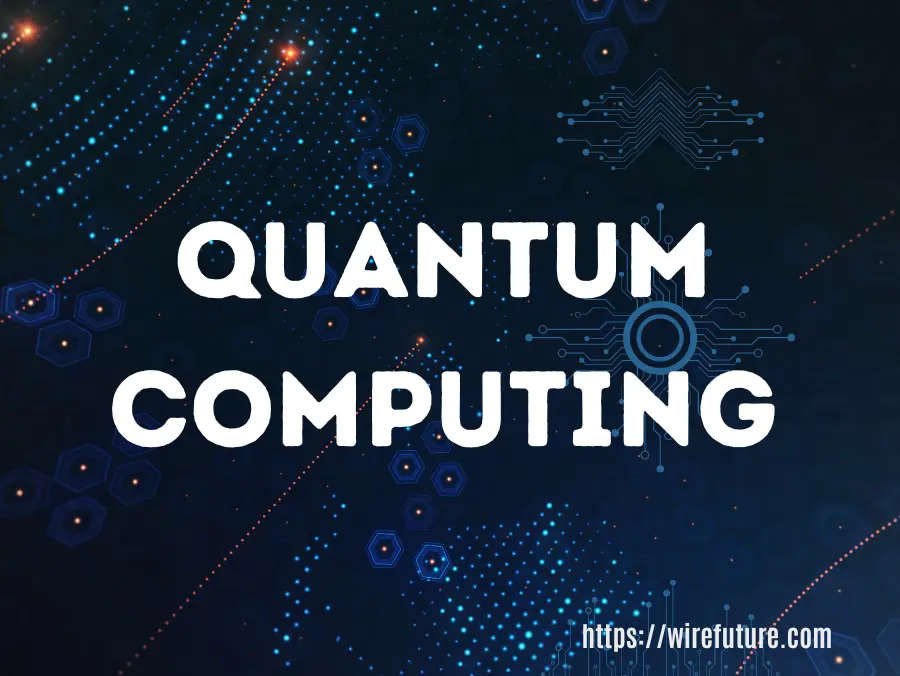
Quantum computing is an essentially new degree of computing power, derived from quantum mechanics. Unlike standard computer systems where bits would be the smallest unit of data, quantum computers can use quantum bits or qubits to represent and store information more effectively for some issues. This computing power increase presents opportunities for solving challenging problems which are presently beyond the reach of traditional computing techniques. The tech giants’ race to attain quantum supremacy – in which a quantum computer can solve a calculation that a classical computer can’t – in a reasonable time – underlines the possible impact of this technology.
Here are some real-world applications and potential uses of quantum computing:
- Cryptography:
- Quantum encryption: Leveraging quantum principles for secure communication through quantum key distribution (QKD), ensuring that any attempt to intercept the communication is detectable.
- Breaking current encryption methods: Quantum computers could potentially decrypt many of the encryption protocols currently in use, prompting the development of quantum-resistant encryption algorithms.
- Drug Discovery and Materials Science:
- Molecular modeling: Quantum computing can simulate molecular structures and reactions with high accuracy, accelerating drug discovery and the development of new materials.
- Personalized medicine: By analyzing genetic information more efficiently, quantum computing could enable highly personalized treatment plans based on an individual’s genetic makeup.
- Optimization Problems:
- Supply chain optimization: Finding the most efficient routes and logistics strategies for global supply chains, potentially saving industries billions of dollars.
- Traffic optimization: Reducing congestion and improving traffic flow in urban areas by analyzing and optimizing patterns of vehicular movement.
- Financial Modeling:
- Market risk analysis: Quantum computing can process vast datasets to more accurately model financial markets, assess risks, and predict trends.
- Portfolio optimization: Efficiently allocating resources and balancing portfolios to maximize returns while minimizing risk.
- Climate Modeling and Environmental Science:
- Accurate climate predictions: Enhancing the precision of climate models to better predict changes in climate, weather patterns, and their potential impacts.
- Ecosystem simulation: Simulating complex ecological systems to understand the effects of human activity on biodiversity and ecosystem health.
- Artificial Intelligence and Machine Learning:
- Accelerating AI algorithms: Quantum computing could significantly speed up the processing capabilities of AI, making machine learning algorithms more efficient and capable.
- Enhanced pattern recognition: Improving the ability of AI systems to recognize patterns in data, which could revolutionize areas such as diagnostic imaging in healthcare.
- Energy Sector:
- Battery technology and energy storage: Designing more efficient batteries by modeling and simulating complex chemical processes at the quantum level.
- Optimizing renewable energy production: Analyzing and optimizing energy distribution networks to maximize the efficiency of renewable energy sources.
Technological Trends: Voice Assistants and Natural Language Processing (NLP)

Voice Assistants and NLP technologies have been advancing quickly and are changing the manner in which we utilize electronic devices and services. These technologies are making technology much more accessible and easy to use by augmenting machines understanding of human language, resulting in even more natural and intuitive interactions.
Here are some real-world applications and potential uses of voice assistants and NLP:
- Smart Home Devices:
- Voice-controlled appliances: Controlling home devices such as lights, thermostats, and security systems through voice commands for increased convenience and accessibility.
- Personalized routines and automations: Setting up personalized voice commands to trigger a series of actions, like turning off lights and locking doors with a single command.
- Customer Service and Support:
- Automated customer support: Using voice assistants and chatbots to handle customer inquiries, bookings, and complaints, providing 24/7 service without human intervention.
- Voice-based shopping and transactions: Allowing customers to make purchases, track orders, and conduct transactions using voice commands.
- Accessibility:
- Assistive technologies for the disabled: Enhancing accessibility for visually impaired or physically disabled individuals through voice-activated technologies that enable them to interact with devices and access information without physical inputs.
- Language translation and learning: Providing real-time language translation services and language learning aids, making communication and education more accessible.
- Healthcare:
- Patient care and management: Using voice assistants to help patients manage their health and medication schedules, access medical information, and even conduct remote consultations with healthcare providers.
- Accessibility for elderly care: Assisting elderly individuals with daily tasks, reminders for medication, and easy communication with family and healthcare providers, thereby enhancing their independence.
- Automotive Industry:
- Voice-activated controls in vehicles: Integrating voice assistants into vehicles to control navigation, entertainment systems, and vehicle settings, allowing drivers to remain focused on the road.
- Emergency assistance and alerts: Using voice commands to call for help or send alerts in case of emergency without needing to physically operate a device.
- Education and Learning:
- Interactive learning experiences: Creating more engaging and interactive learning environments through voice-activated educational tools and resources.
- Accessibility for learners with disabilities: Making educational content more accessible to students with disabilities through voice commands and auditory responses.
- Business and Productivity:
- Voice-to-text dictation: Enhancing productivity by allowing users to dictate text, emails, and documents through voice, improving efficiency and multitasking capabilities.
- Meeting summaries and action items: Automatically generating meeting summaries and action items from voice-recorded meetings using NLP technologies.
- Entertainment:
- Interactive storytelling and games: Offering immersive storytelling and gaming experiences that users can interact with through voice commands.
- Personalized content recommendations: Using voice queries and NLP to analyze preferences and provide personalized content recommendations in music, movies, and more.
Wrapping Up on technological trends
In conclusion, the technological trends are changing at an unprecedented speed because of AI, ML, Blockchain & Cryptocurrency, Quantum Computing, Cybersecurity, 5G technology, AR/VR, IoT, Voice Assistants & NLP. Each of these areas is a frontier of innovation that can alter industries, our everyday life and our digital experiences. As we enter this technological renaissance era, professionals, businesses, and enthusiasts need to be flexible and aware to capitalize on these technological trends.
The advancements discussed herein promise to enhance efficiency and sustainability in all sectors in addition to economic growth and several of the most pressing problems in society today. From AI and ML applied to healthcare outcomes to blockchain for transparent and safe transactions, the opportunities are as endless as they are thrilling. Furthermore, 5G will enable these innovations to take flight with the added speed and connectivity required to realize these futuristic visions.
In this dynamic technological world, skilled developers and innovative software solutions become more crucial than ever before. Here at WireFuture, we know how technology drives progress. Regardless of whether you want to hire blockchain developers to secure and transparently use blockchain technology or need healthcare software development services to transform patient care, WireFuture can enable you to navigate the digital age. Our experts deliver customized solutions to meet your requirements in a digital world that changes every minute.
Our team of software development experts is here to transform your ideas into reality. Whether it's cutting-edge applications or revamping existing systems, we've got the skills, the passion, and the tech-savvy crew to bring your projects to life. Let's build something amazing together!
No commitment required. Whether you’re a charity, business, start-up or you just have an idea – we’re happy to talk through your project.
Embrace a worry-free experience as we proactively update, secure, and optimize your software, enabling you to focus on what matters most – driving innovation and achieving your business goals.




